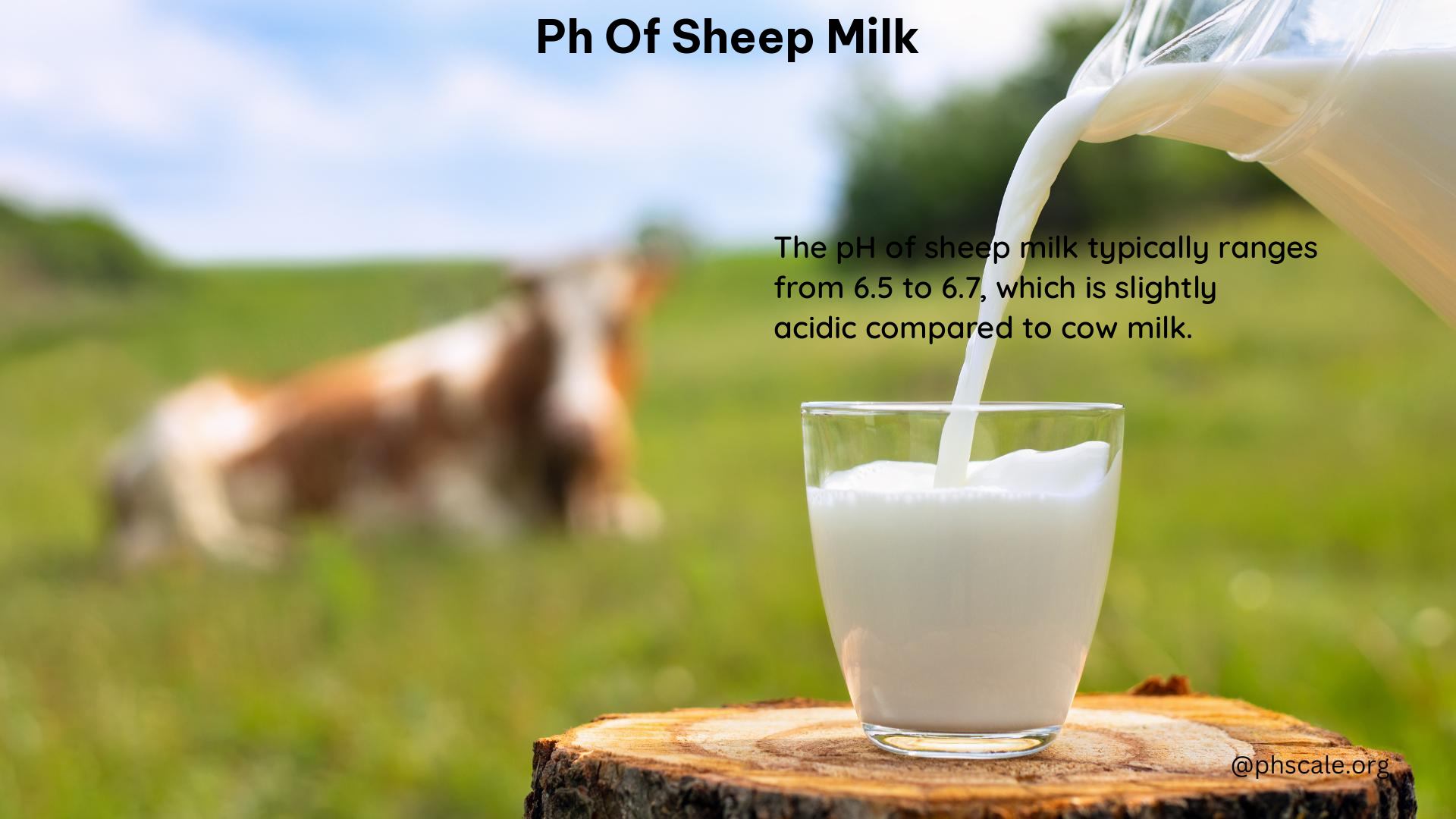The pH of sheep milk is a crucial parameter that affects its properties and behavior during processing and storage. This comprehensive guide delves into the intricacies of sheep milk pH, exploring its range, impact on sedimentation, protein interactions, heat coagulation, and viscosity. Additionally, it addresses the potential contaminants and chemicals that can influence the milk’s pH, as well as the methods used to balance it.
pH Range of Sheep Milk
Sheep milk typically has a pH range of 6.6 to 7.0, which is slightly higher than the pH range of cow milk, which is around 6.5 to 6.7. This difference in pH can have significant implications for the milk’s processing and storage characteristics.
pH-Dependent Sedimentation

One of the key challenges associated with sheep milk is its instability during ultra-high-temperature (UHT) processing, which can lead to sedimentation. The pH of the milk plays a crucial role in this process. At a pH of 6.6, sheep skim milk (SSM) exhibits high levels of sedimentation, whereas at pH 6.7 to 6.9, the sedimentation is lower. This is because the proteins in the sediment are mainly κ-casein-depleted casein micelles with low levels of whey proteins, which are more stable at higher pH values.
pH and Protein Interactions
The pH of sheep milk also influences the interactions between its various proteins. As the pH increases, the dissociation levels of κ-, β-, and α-casein increase, leading to changes in protein composition and structure. This can affect the stability of the casein micelles and the formation of protein aggregates, which can impact the milk’s processing and storage characteristics.
pH and Heat Coagulation
The pH of sheep milk also affects its heat coagulation properties. At lower pH values, the heat coagulation time is shorter, indicating that the milk is more susceptible to heat-induced coagulation. This is an important consideration during processing, as it can impact the milk’s stability and quality.
pH and Viscosity
The viscosity of sheep milk is also pH-dependent. At lower pH values, the viscosity increases, which can affect the milk’s flow behavior and processing characteristics. This is an important factor to consider when designing processing equipment and handling the milk during various stages of production.
Contaminants and Chemicals
Sheep milk can contain various contaminants and chemicals that can affect its pH and overall quality. These may include bacterial contaminants like E. coli and Staphylococcus aureus, which can produce acidic byproducts and lower the pH, as well as chemical residues from pesticides, heavy metals, or other environmental pollutants, which can alter the milk’s pH and composition. Natural compounds like lactoferrin can also affect the milk’s pH and antimicrobial properties.
Balancing the pH of Sheep Milk
To balance the pH of sheep milk, several methods can be employed:
- Acidification: Adding acidic substances like glucono-δ-lactone can lower the pH and improve the milk’s coagulation properties.
- Neutralization: Adding alkaline substances like sodium hydroxide can raise the pH and improve the milk’s stability during processing.
- Heat treatment: Heat treatment can denature proteins and alter the pH of the milk, making it more stable during storage.
Ideal pH for Consuming Sheep Milk
The ideal pH for consuming sheep milk is around 6.6 to 6.8, which is close to its natural pH range. This ensures that the milk’s natural properties and nutrients are preserved.
Home Remedies for Balancing Sheep Milk pH
Some home remedies to balance the pH of sheep milk include:
- Adding a pinch of baking soda to raise the pH.
- Adding a squeeze of fresh lemon juice to lower the pH.
- Mixing the milk with other ingredients like honey or yogurt to create a balanced pH.
Historical Perspective
Sheep milk has been consumed for centuries, particularly in Mediterranean and Middle Eastern cultures. The pH of sheep milk has been studied extensively in recent years to improve its processing and storage characteristics, ensuring that this nutritious and versatile dairy product can be enjoyed by consumers worldwide.
References
- ResearchGate. (n.d.). pH values of buffalo, cow, sheep and goat milk samples. Retrieved from https://www.researchgate.net/figure/pH-values-of-buffalo-cow-sheep-and-goat-milk-samples_fig6_312583378
- ResearchGate. (n.d.). Physical properties of sheep milk in different stages of lactation. Retrieved from https://www.researchgate.net/figure/Physical-properties-of-sheep-milk-in-different-stages-of-lactation_tbl2_242728678
- ScienceDirect. (2022). pH-dependent sedimentation and protein interactions in ultra-high-temperature-treated sheep skim milk. Retrieved from https://www.sciencedirect.com/science/article/pii/S0022030222007421
- Journal of Dairy Science. (1995). A Comparative Study of pH and Temperature Effects on the Acidic Coagulation of Milks from Cows, Goats, and Sheep. Retrieved from https://www.journalofdairyscience.org/article/S0022-0302%2895%2976898-9/pdf
- PubMed. (2022). pH-dependent sedimentation and protein interactions in ultra-high-temperature-treated sheep skim milk. Retrieved from https://pubmed.ncbi.nlm.nih.gov/36543644/.
